Affiliate links on Android Authority may earn us a commission. Learn more.
HTC One Review
Published onMarch 27, 2013
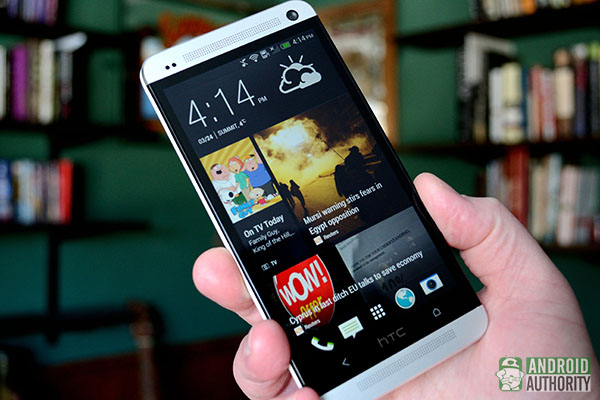
After a series of well designed phones that nonetheless were poor sellers, HTChas adopted an all-or-nothing approach with its latest flagship, the somewhat confusingly-named HTCOne. Does the One have what it takes to bring the company out of its slump? Read on to find out.
In a hurry? Check out our video review or jump to the conclusion at the bottom of the article.
Specs
- 4.7-inch 1080p display (468 ppi)
- 1.7 GHz quad-core Qualcomm Snapdragon 600 processor
- Adreno 320 GPU
- 2 GB RAM
- 32 GB internal storage
- 4 MP UltraPixel rear-facing camera
- 2.1 MP front-facing camera
- 1080p video capture
- 2,300 mAh battery
First Impressions
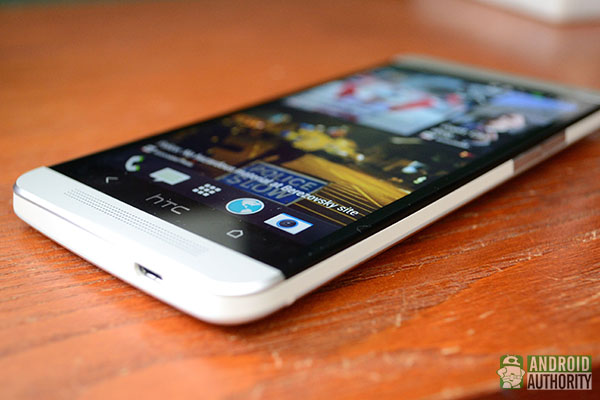
We got our first look at the HTCOne back in February when HTCofficially unveiled it at dual events held in New York and London. As cool as that may be, those events aren’t necessarily the best way to get a good feel for a new device. Still, I was quickly impressed with the phone’s specs and design, and was looking forward to the day that I got to spend some, ahem, one-on-one time with the One.
Build Quality & Design
With its aluminum body and sleek, clean lines, the HTCOne holds up to the company’s reputation of excellent build quality, and then some. At 143 grams, it’s not the lightest phone we’ve seen, but the solid feel on such a thin device is worth the trade off.
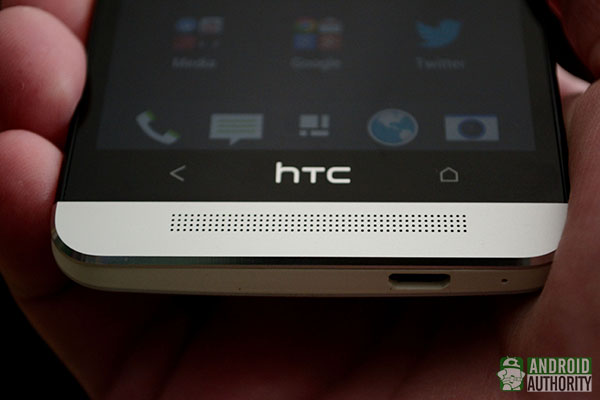
It’s clear that HTCspent a good deal of time thinking over the design elements of the One. Looking over the device, you can see clear inspiration from earlier models bearing the One name, as well as the Butterfly / Droid DNA. The phone is a great fit in the hand. It might not seem it, but the slight step down in size from the Droid DNA is all it takes to make the HTCOne a breeze for one handed operation. That said, with all this attention to design, the power button is in an even stranger spot than it is on many other HTC phones: on top of the device, on the left side.
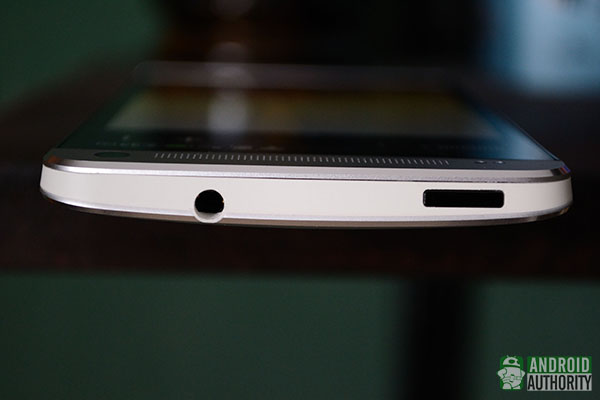
At first, I wasn’t sure that the BoomSound HTCwas heavily hyping would be anything worth paying attention to, but this is by far the most impressive sounding phone I’ve encountered. While Beats Audio is still going to be a turn off for audiophiles, it really works here, lending a thick, substantial sound to the HTCOne’s speakers. For music, you’ll probably still want headphones, but for movies or games, you’ll be just fine with the speakers, assuming you won’t draw the ire of those around you by using them.
Display
The HTCOne’s display is quite possibly the best we’ve seen in an HTCdevice to date. At a resolution of 1920 x 1080 spread across 4.7 inches, the pixel density is a whopping 468 ppi, aka. incredibly sharp. Unless you’re looking at a low quality or low resolution source, it’s pretty much impossible for anything to look objectively bad on this screen. Text and icons show no sign of aliasing, and colors pop vividly. With Sense 5’s new text-heavy, minimalist interface, the sharpness is especially apparent.
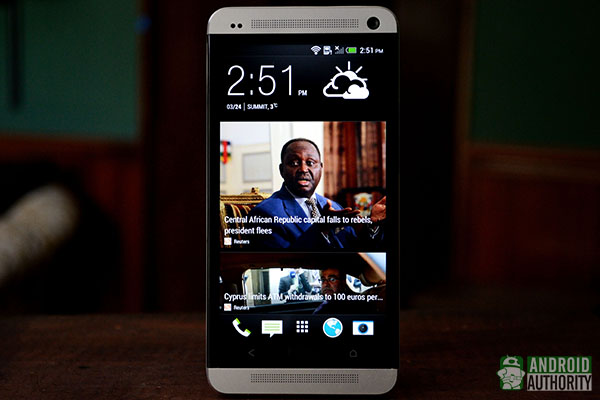
One minor downside is that, at least on the unit I tested, the brightness wasn’t able to stand up to glare from sunlight or other bright light sources. With a glossy fingerprint-magnet finish on the screen, this was a problem that popped up more than once. Carry around a microfiber cloth and you’ll be far better off, but it’s something to be aware of.
Performance
With its Qualcomm Snapdragon 600 chipset, nobody was expecting the HTCOne to be a slouch in the performance department, and benchmarks certainly didn’t provide any surprises here. Running my standard AnTuTu test, using the average of three runs, I wound up with a final score of 24,258. Epic Citadel provided similarly impressive numbers, producing framerates of 56.7 FPS in High Quality mode, and 57.9 FPS in High Performance mode. Considering that the benchmark is updating 2,073,600 pixels that many times per second, it’s fairly impressive.

Of course, when we actually use our devices, we don’t just sit around and run benchmarks all day (most of us, anyway). Luckily real-world performance proved to be speedy as well. Even though rapidly flipping through homescreens is something people don’t usually do unless they’re very, very bored, I still noticed no hitches while doing this. Launching apps was very fast, and every single game I tried ran like a dream.
I did notice during the benchmarks that the device would get warm after a while, but certainly not as warm as the HTCOne X+, for example.
Software
The HTCOne runs Android 4.1.2 Jelly Bean and, of course, HTCSense 5. Sense has its share of fans and likely many more who would just prefer stock Android, but the good news is that whether you like it or not, Sense 5 is the least obtrusive version of Sense to date. Well, unless you count BlinkFeed.
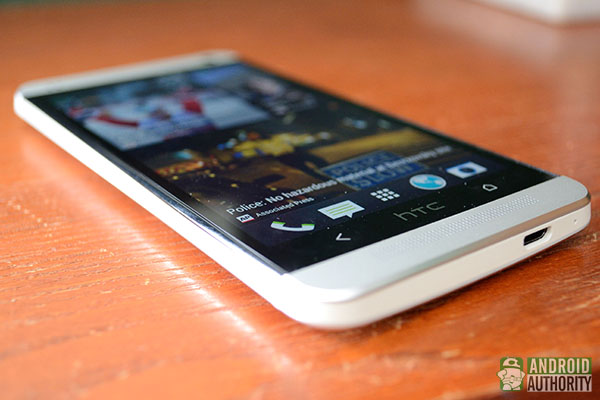
BlinkFeed is essentially a homescreen replacement that eschews the standard icons and widgets approach for news items and social media update. Strongly influenced by the likes of FlipBoard and Windows Live Tiles, its goal is to pull a wide variety of information into one easily accessible space. I can certainly imagine that there are people who are going to love this feature, but I’m also sure that there are many, like me, who would rather just open an app or two to access the same information. Right now, the sources available for BlinkFeed are somewhat limited, but it seems likely that if the new approach takes off, others will become available.
For the rest of Sense 5’s updates, it seems that the general focus was on cleaning up the interface and adding small but useful tweaks. My personal favorite is the ability to have a custom app drawer layout, including folders for groups of apps. I’m sure anyone out there with pages and pages of apps will at least want to try this out if they haven’t already.
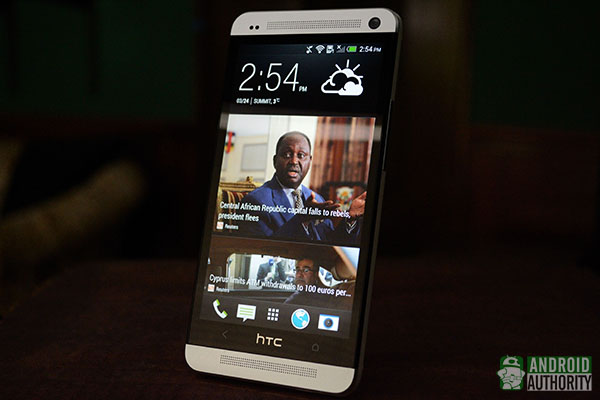
As no carriers had gotten their paws on my review unit, it was thankfully mostly bloatware free, but I wouldn’t expect it to be that way if I was buying one via the retail route. HTChas included a few apps like a Flashlight and Voice Recorder, as well as its TV app, which essentially combines a channel guide and remote control, complete with IR, so no need to dig through the couch cushions if you can’t find the remote.
Camera
It’s impossible to talk about the camera in the HTCOne without talking about UltraPixels. So, what are they? Well, HTC’s reasoning is that it isn’t about how many megapixels you have, it’s what you do with them. So they cut the amount of pixels per photo, but instead use a sensor that captures more light per pixel. This, theoretically at least should lead to a host of cool features like improved low-light performance.
So, how does it work? Well, HTCis right in at least one regard: low-light performance is very nice. I also noticed that in heavily contrasted, like those with a subject in front of a bright light, the resulting image was less of a blown out mess than it would be with many other cameras. Does this mean that the HTCOne’s camera is the best smartphone camera ever? Well, no. Photos are definitely very nice, but I’ve seen similarly nice looking photos taken on a wide range of cameras, and those do often have a higher megapixel count.

The 1080p video captured by the rear-facing camera (the front-facing camera records 1080p as well) is very much in the same boat. The video captured can be very nice, and the HTCOne allows HDR video recording and 60 FPS recording, but the general image quality of the video isn’t far and away the best video I’ve ever seen.
There’s something else that it’s impossible not to mention when talking about the camera: HTCZoe. Zoe is a novel new capture tool that simultaneously takes short videos and multiple images. In addition, when you engage Zoe mode, the HTCOne starts running a constant buffer, recording in the background so that when you press the shutter button, it actually captures one second before you pressed the button.
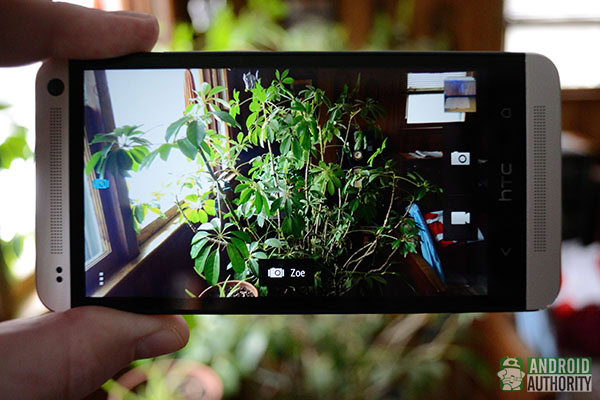
In addition to all this, the HTCOne features a host of different options like Sequence Shot, which uses Burst Mode to superimpose multiple images of the subject in motion on a single background, and a feature to remove unwanted guests from photos.
Battery
At 2,300 mAh, we’ve certainly seen batteries with higher capacities, but at least the previous generation of Snapdragon processors was very efficient, so how does the HTCOne’s battery hold up? That’s an interesting question.
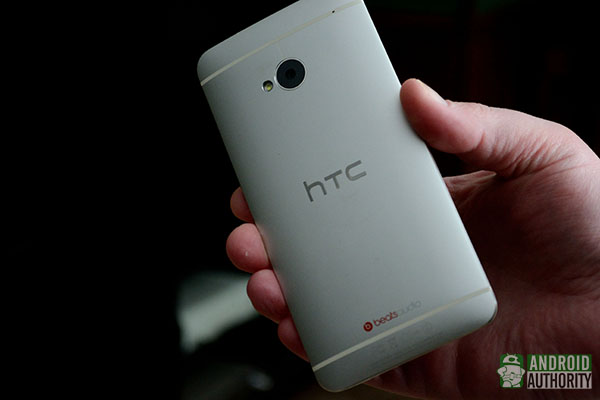
During heavy testing, the battery ran out after just a tad over 5 hours. Curious, I ran the AnTuTu Tester battery test, which scored the HTCOne at 472, reporting a capacity of 18% at 5:55. So under heavy strain, the battery life isn’t as impressive as some other devices we’ve seen. That said, during normal use, the story was completely different. After a long day of frequent use, the One still had over 30% battery when I finally called it a night and plugged in the charger.
Unfortunately, the battery isn’t replaceable. Batteries last longer than they used to, but it’s still disappointing, though understandable in this case, given some of the HTCOne’s design elements.
Conclusion
In the end, with the HTCOne, the company has combined a gorgeously designed, well built phone with a “throw it at the wall and see what sticks” approach when it comes to the included software. The end result? A solid, well performing phone that does an awful lot really well, while only occasionally missing the mark.
According to HTC, they’re getting a lot of pre-orders, which would appear to indicate that there are some people out there getting excited about the One. So what about you? Let us know what you think in the comments below.